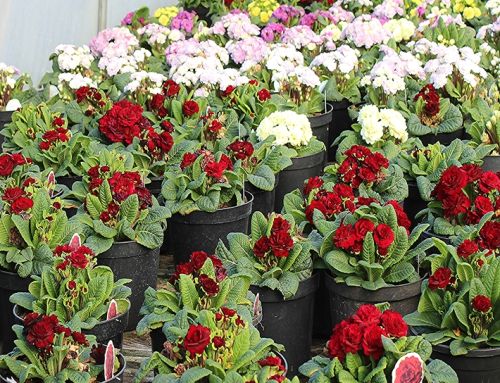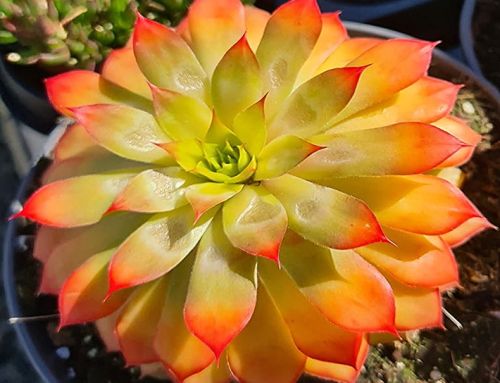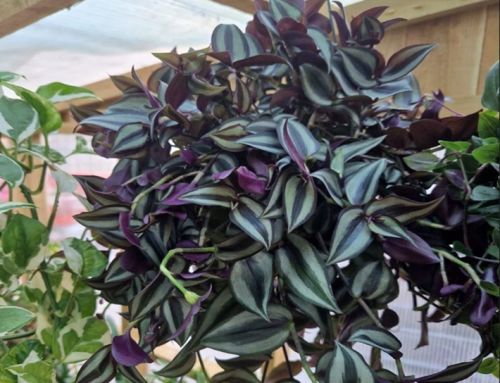Childhood memories of Hardy Chrysanthemums
I have been interested and fascinated in gardening of all kinds for as long as I can remember. Where it stemmed from is a complex beast. Great Granddad (oddly enough he was a Richard too) was head gardener at a very prestigious Hall during the Victorian plant collecting era, a truly fascinating time. He grew all sorts of weird and wonderful plants from around the world. His enthusiasm was passed to his daughter-in-law and his granddaughter, my mum. So as you can see it has been in the blood for generations. I suppose it is no surprise that I am completely obsessed. I have many fond memories of hours spent in the garden with Gran and one of her real loves was hardy Chrysanthemums. Oh, if only she could see the range nowadays – she would be in her elements.
 Her drifts of Chrysanthemums really shone, their colours exaggerated by the soft autumnal light on those hazy days. Nothing looked more glorious, single and double, some tall others short. Each clump forming a splash of colour ranging from deepest red to pure white with a plethora of bronzes, oranges, pinks and yellows in between. Many had been in the family for generations, some un-named and often grown from seed. The best varieties, as we do today, were propagated and given away to any friends who wanted them. I can still remember walking around the garden with her, picking armfuls for harvest festival to decorate the little local church…Combined with Dahlias, vegetables and corn sheaths from the farm, it was a glorious spectacle. The smell too is very evocative, for me it is another reason that they are so special bringing back these precious memories every time I work with them.
Her drifts of Chrysanthemums really shone, their colours exaggerated by the soft autumnal light on those hazy days. Nothing looked more glorious, single and double, some tall others short. Each clump forming a splash of colour ranging from deepest red to pure white with a plethora of bronzes, oranges, pinks and yellows in between. Many had been in the family for generations, some un-named and often grown from seed. The best varieties, as we do today, were propagated and given away to any friends who wanted them. I can still remember walking around the garden with her, picking armfuls for harvest festival to decorate the little local church…Combined with Dahlias, vegetables and corn sheaths from the farm, it was a glorious spectacle. The smell too is very evocative, for me it is another reason that they are so special bringing back these precious memories every time I work with them.
Today the range is immense, we stock in excess of 80 varieties and there are another 10 that we have just brought in from Germany to add to our collection. It may be bordering on an obsession -after all, how many different types does one need. However once you start to really look at them they are all individual. The flower shapes vary from tight button-like to ragged and almost blousy, from strange spidery ones to neat clusters. They vary from short to tall. Some are real thugs surviving everything that Mother Nature can throw at them. Others are more of a challenge but the thrill of seeing them flower for the first time makes it all worthwhile. Waiting for the petals to slowly unfurl, checking every day to see if that perfect flower has finally emerged.
 Chrysanthemums have been in cultivation for centuries. They were originally grown in China as a culinary herb. The young shoots and petals were used in salads and the flowers and older leaves brewed to make tea (although eating them is not recommended). The Japanese subsequently adopted the flower, elevating it to royalty status. The flower is still used on the Emperors seal and the ‘Supreme order of the Chrysanthemum’ is a prestigious award.
Chrysanthemums have been in cultivation for centuries. They were originally grown in China as a culinary herb. The young shoots and petals were used in salads and the flowers and older leaves brewed to make tea (although eating them is not recommended). The Japanese subsequently adopted the flower, elevating it to royalty status. The flower is still used on the Emperors seal and the ‘Supreme order of the Chrysanthemum’ is a prestigious award.
It wasn’t until the 17th Century that they were introduced to Europe.
Chrysanthemums are simplicity itself to grow; they integrate easily into the cottage garden adding a splash towards the end of the year when colour is at such a premium. If the weather is kind they can flower well into December, giving a succession of colour from August almost until Christmas. Combined with such other late flowering beauties as Schizostylis (Hesperantha) Michaelmas Daisies (Asters) and Rudbeckias and you will have an autumn border to rival any in the summer. Add a few grasses to finish the job.
Soil types can be variable, just avoid very dry and wet conditions. Like most herbaceous plants a good soil is preferable for best results, you do get back what you put in, and they are hungry plants. Add fertiliser that is not too nitrogenous and quick acting, fish blood and bone or similar. Sun is a must, without this the resulting stems will be weak and spindly. Staking is sometimes necessary especially with the taller forms but there is a little trick that we use to help with flower production and to keep them self supporting. In May or early June give them the ‘Chelsea Chop’. All you have to do is cut out the growing points – job done. This cuts down the ultimate height and encourages branching. This in turn increases the number of flowers produced. Win Win! Beware though this must not be done after the longest day (june 21st).
 As mentioned briefly earlier they make superb cut flowers, often lasting for three weeks or more. It you prefer they can be grown in a row in the vegetable garden for just this purpose, it saves spoiling your border when you need a bunch or two. There’s nothing like giving a posie to a friend or neighbour.
As mentioned briefly earlier they make superb cut flowers, often lasting for three weeks or more. It you prefer they can be grown in a row in the vegetable garden for just this purpose, it saves spoiling your border when you need a bunch or two. There’s nothing like giving a posie to a friend or neighbour.
Growing extra plants is also not particularly taxing. In the nursery trade we snip off cuttings at almost any time from March until August and put them into a mixture of half and half perlite and peat/compost. As they root ‘internodally’ i.e. between the points where the leaves join the stem, you can just chop them off and place them in the required pot. No rooting powder, no special care, just keep the length to about 7.5cm (3”). Water and place in a spot that has good but not direct light. – Easy. If you don’t fancy that then divide the clumps in March or just pull off little shoots with roots attached, again during March. These are called Irishman’s cuttings.
If you grow them in pots it is best to keep the roots relatively frost free by moving into a cold greenhouse. In the ground they are usually quite hardy.
They suffer from few Pests and Diseases so shouldn’t really give you any troubles.
I hope that you get as much pleasure from this exotic yet easy plant as it has given me over the years, just enjoy them.






